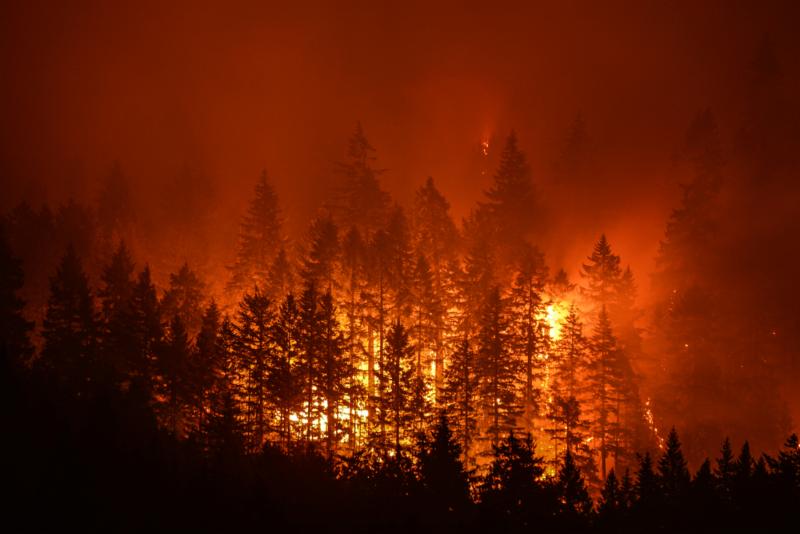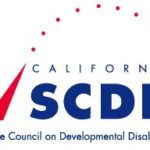
Our thoughts are with all those affected by the fires in California. Even if the fires are hundreds of miles away, we are all experiencing the smoke and poor air quality. If you haven’t made a Plan or Kit, this is a great time to do so! Grab a cloth grocery bag or zippered duffle bag and start filling it with items on the list below. Remember to add any unique items you may need during an emergency or if you need to evacuate from your home for 3+ days.
If you would like to schedule a training or need additional resources, please contact SCDD’s office at 916-263-8134
Emergency Go Kits are portable kits you pack in advance, so that if an emergency strikes, you just pick up the kit and go!
Here are some items you may want in your Kit:
_ Water (keep several small packets rather than one large bottle)
_ Food (pick things you enjoy and items that don’t need to be cooked)
_ Small first-aid kits/essential medications/eyeglasses/hearing aids
_ A list of prescriptions and medical phone numbers
_ AM/FM radio (with extra batteries)
_ Mylar blankets (space blanket)
_ Flashlight (with extra batteries)
_ Lightsticks
_ Whistle (loud) (blow once for Yes, twice for No, three times for Help!)
_ Comfortable/sturdy shoes
_ Clothes (several light layers is better than heavy or bulky items)
_ Garbage bags /plastic bags
_ Duct tape
_ Tissues/toilet paper
_ Deck of cards, book or something to help pass time
_ Face masks/dust mask/Bandana or cloth to cover your face
_ Pocket knife /Swiss Army knife/scissors
_ Copies of important papers (ID, credit cards, insurance policies, etc.)
_ Cell phone and charger
_ Paper copy of contact information for family & friends
_ Cash and coins (don’t count on ATMs working)
_ Pen and paper
_ For People with Limited English Proficiency (LEP): a dual-language dictionary, contact information for bilingual friends and supporters, list of agencies where native language is supported, and translated emergency information for sharing with emergency personnel.
_Written description of any special accommodations you may require during an emergency, for example, about communication or mobility needs.
Online Resource List
SCDD’s Emergency Preparedness Guide for People with Disabilities.
FEMA and FEMA Related
- FEMA Ready Responder Toolkit resources on how to develop an organizational preparedness plan.
- My Hazards Discover Hazards in your area.
- Youth Emergency Preparedness Curriculum
- We Prepare Everyday PSA
- Plan Ahead
- Preparedness for Individuals with Disabilities
- FEMA Disaster preparedness fact sheet
Pacific Gas & Electric (PG&E)
CalOES
Sacramento County
Red Cross
HFCDHP
The Center focuses on improving access to health care for people with disabilities and enhancing health professions education for disabled people.
- Emergency Health Information: Savvy Health Care Consumer Series
- Emergency Evacuation Preparedness Guide
- Checklist for Integrating People with Disabilities and Others with Access and Functional Needs into Emergency Planning, Response & Recovery (2014)
Disaster Resources for people with disabilities and others with access and functional needs, emergency managers and planners and disability-focused organizations.
For First Responders
- Emergency response for people who have access and functional needs
- Comprehensive guide for first responders
Info by County
If your county isn’t listed here search the name of your county and office of emergency services.
- Sacramento County
- Placer County
- El Dorado County
- Yolo County
- Sutter County
- Yuba County
- Colusa County
- Nevada County
Wildfire Smoke Can Affect High Risk Groups
Eight Tips for Protecting Yourself from Breathing Wildfire Smoke
- Pay attention to local air quality reports. When a wildfire occurs in your area, watch for news or health warnings about smoke. Pay attention to public health messages and take extra safety measures such as avoiding spending time outdoors.
- Pay attention to visibility guides if they are available. Although not every community measures the amount of particles in the air, some communities in the western United States have guidelines to help people estimate air quality based on how far they can see.
- If you are told to stay indoors, stay indoors and keep your indoor air as clean as possible. Keep windows and doors closed unless it is very hot outside. Run an air conditioner if you have one, but keep the fresh-air intake closed and the filter clean to prevent outdoor smoke from getting inside. Seek shelter elsewhere if you do not have an air conditioner and it is too warm to stay inside with the windows closed.
- Use an air filter. Use a freestanding indoor air filter with particle removal to help protect people with heart disease, asthma or other respiratory conditions and the elderly and children from the effects of wildfire smoke. Follow the manufacturer’s instructions on filter replacement and where to place the device.
- Do not add to indoor pollution. When smoke levels are high, do not use anything that burns, such as candles and fireplaces. Do not vacuum, because vacuuming stirs up particles already inside your home. Do not smoke tobacco or other products, because smoking puts even more pollution into the air.
- Follow your doctor’s advice about medicines and about your respiratory management plan if you have asthma or another lung disease. Call your doctor if your symptoms worsen.
- Do not rely on dust masks for protection. Paper “comfort” or “dust” masks commonly found at hardware stores trap large particles, such as sawdust. These masks will not protect your lungs from smoke. An “N95” mask, properly worn, will offer some protection. If you decide to keep a mask on hand, see the Respirator Fact Sheet provided by CDC’s National Institute for Occupational Safety and Health.
- Avoid smoke exposure during outdoor recreation. Wildfires and prescribed burns—fires that are set on purpose to manage land—can create smoky conditions. Before you travel to a park or forest, check to see if any wildfires are happening or if any prescribed burns are planned.
In an emergency, let your family know you’re safe! If your community has experienced a disaster, register on the American Red Cross Safe and Well website to let your family and friends know you are safe. You may also call 1-866-GET-INFO to register yourself and your family.

